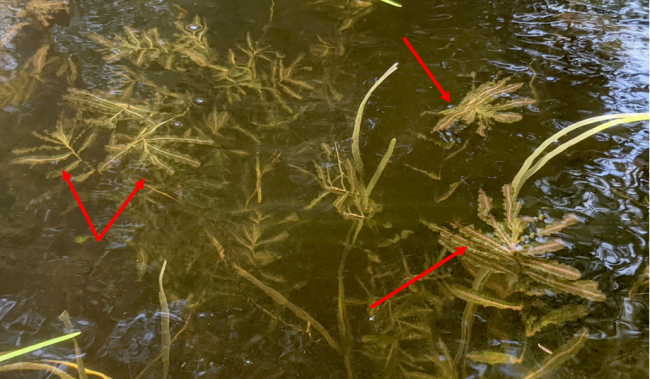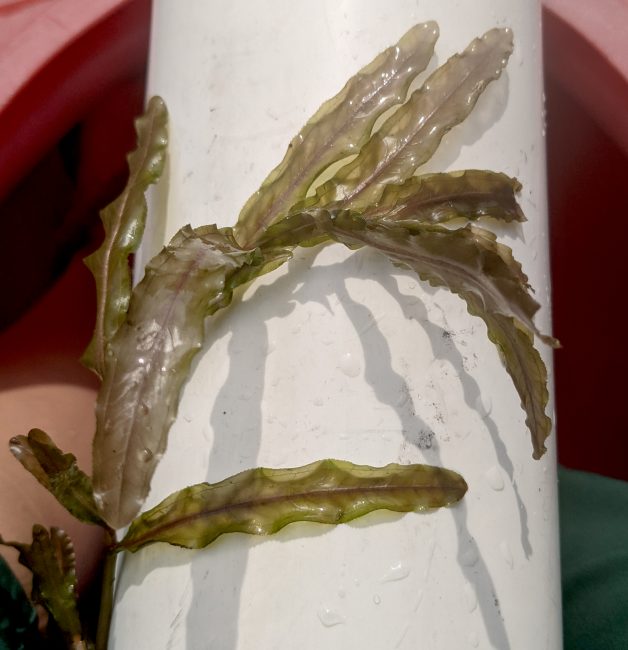A small patch of CLP was recently discovered in North Pond, and the “serpentine” stream connecting to East Pond. It has also been documented in Legion Pond, West Pond, and the Kennebec River. In the photos below you can see the wavy nature of the leaves. There are many native pondweeds in Maine, so it is good to get photos if you see anything that looks like this.
Curly-leaf pondweed is a submerged plant with strap-shaped leaves, similar to many of Maine’s native pondweeds. However, unlike our native pondweeds, Curly-leaf pondweed leaves are distinctly ruffled with finely serrated edges. It grows in large dense beds. Curly-leaf pondweed, a native plant of Europe and Asia, is a threat to lakes and ponds throughout the United States. This species was confirmed in a small pond in southwestern Maine in 2004. It is also present in nearby Massachusetts, New Hampshire, Vermont, Connecticut, New York, and Rhode Island. Curly-leaf pondweed is adapted to growing in cool conditions. Plants sprout from rhizomes and turions (a hard vegetative bud) in the fall and grow through the winter, reaching maturity early in the season (late spring through early summer). Plants generally die back by mid-July after releasing seeds and more importantly the turions. Once released, the turions scatter, floating through the water and sinking to the bottom where they lie dormant until the water begins to cool again in the fall.
Photos courtesy of the 7 Lakes Alliance

